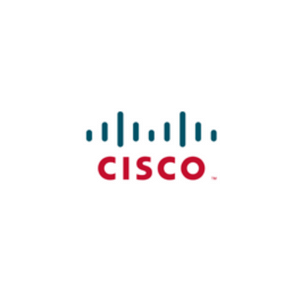Insights
INSIGHTS
All Topics
My Account
Learning the lingo: getting to grips with software jargon
04 Sep 2020by Christine Chiu
Tech should be inclusive, with new developments bringing the world together. But there are barriers to accessibility, not least of all the vernacular. We decode some of the jargon
Trying to decode your tech team? Understanding and learning the software development lingo doesn’t have to be daunting.
Getting a grip on the basic steps and jargon can shed light on what many people see as the ‘black box’ of charity app development.
Better communication can also help promote data sharing across organisations, meaning no more data silos. We focus on the world of tech development we explore the basis of how software is produced and launched.
Where does all this jargon come from?
The theory behind software development generally follows two main ideas. The first, and more traditional is called the ‘waterfall’ method.
The project management steps to developing software are like a waterfall cascade. According to ScienceDirect, the approach follows a logical, ordered process to software delivery:
- Scope and plan project
- Gather and document requirements
- Design application
- Develop application and perform unit tests
- Conduct system testing
- Perform UAT
- Fix application as appropriate
- Deploy application
The waterfall method means that each step follows one after the other. The point is that projects don’t progress to the next stage unless the teams are happy with the current one.
The agile approach to charity software development
Agile software development is the more modern theory. Agile considers views from different departments, and focuses on what customers want. Customer preferences are prioritised in the development process.
Instead of step-by-step stages, development can happen at the same time across different processes. During each development phase, something is completed or delivered. Because agile focuses on delivering what customers want, each phase can be demonstrated or shown to charity users.
Charities are already using agile to develop and launch products. Diabetes UK uses agile because the approach lets other teams know where their bit of the project stands in the queue.
“User stories and the concept of a backlog have been key here. We usually involve product owners and any wider project group in the development of user stories. And colleagues appreciate that even if their work cannot be done now, there is a backlog of user stories/potential projects, where they have contributed to prioritisation and can see an ordered list for future development.”
- Graeme Manuel, Digital Communications Manager at Diabetes UK
Diabetes UK’s experience shows us the benefits of agile are transparent working and better communication.
For many charity teams, agile offers a more flexible way of working, because teams are working all at once. There’s no waiting for the previous ‘stage’ to finish.
Have you already heard of some of these terms?
Now that we’ve covered the basics, we can start to decode your IT team. By looking at key terms and concepts from both the waterfall and agile approach, charities can better understand at what stage projects are in.
Requirements and user stories
For both waterfall and agile software development, requirements outline what’s really needed in software. Essentially, the requirements are a collection of deliverables that the software is meant to meet.
For teams using agile development, requirements come in user stories. User stories are simple, short descriptions. Software users typically define what they want to achieve and why that’s the case. For IT teams, user stories help break down how the new software might be used into small bite-sized pieces.
UAT
The acronym stands for ‘user acceptance testing’. Tech terms define the UAT as: “A process designed to help ensure products will meet user expectations when they are released. It involves running a product through a series of specific tests that help indicate whether or not the product will meet the needs of its users.”
In simple terms, UAT tests how closely the new software works, and whether it meets the expectations of users. UAT can also give extra comfort to charity teams around quality.
Scrum and scrum masters
No, your charity tech team hasn’t morphed into a rugby team. A scrum is a small team of multi-talented tech people working together. The scrum team has a scrum master, who helps guide the team through short bursts of activity to deliver a user story.
These short bursts of activity are called ‘sprints.’
To make sure that scrum teams stay on track, sprints are made up of timeboxes.
Timeboxes are defined periods of work – they can be a few days to a week, depending on the project.
Minimum viable product (MVP)
After all the phases of UAT have been completed, a minimum viable product (MVP) emerges.
The MVP is a prototype of the end-product. The MVP is the version of the software that helps developers gather the most information on what customers do with the product.
Eric Ries, the author of The Lean Startup says: “The lesson of the MVP is that any additional work beyond what was required to start learning is waste, no matter how important it might have seemed at the time.”
The bottom line is that the MVP is the most basic product developers launch in order to learn and improve on.
Minimum marketable product (MMP)
Sometimes confused with the MVP, MMP isn’t a feedback tool for software developers. The MMP is the version of the software with the minimum number of features to satisfy charity users.
For charities focusing on delivering digital services, the MMP can be sent to a specific set of people first. Once upgraded with more features, a second version of the application can be rolled out for everyone else. For charity tech teams, the MMP proves that there is an appetite for the new application.
Releases and maintenance
Releases in software development have specific characteristics. The Project Management Institute notes that to be successful, charity tech releases should be:
- Deployed on time;
- Deployed on budget;
- Have only a small, if any, impact on existing customers;
- And satisfy the requirements of new customers
As releases are made, maintenance updates can also be done. For charity software apps, this could take the form of an upgrade.
More on this topic
07 Mar 2025by Laura Stanley
An introvert’s guide to networking
27 Feb 2025by Laura Stanley
Charity Spotlight: Dr Anton Mari Lim, President, Yellow Boat of Hope Foundation
Recommended Products
Our Events
Charity Digital Academy
Our courses aim, in just three hours, to enhance soft skills and hard skills, boost your knowledge of finance and artificial intelligence, and supercharge your digital capabilities. Check out some of the incredible options by clicking here.




















